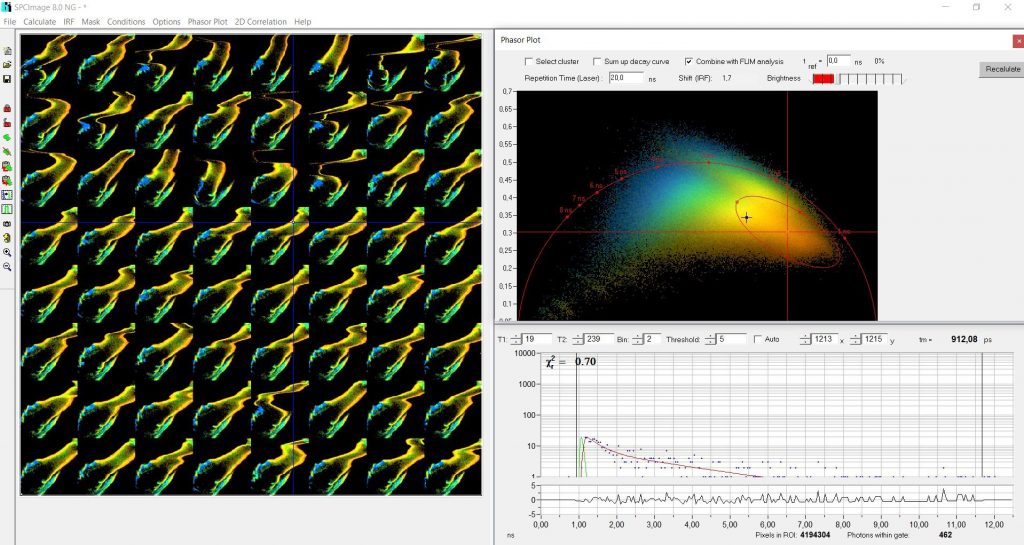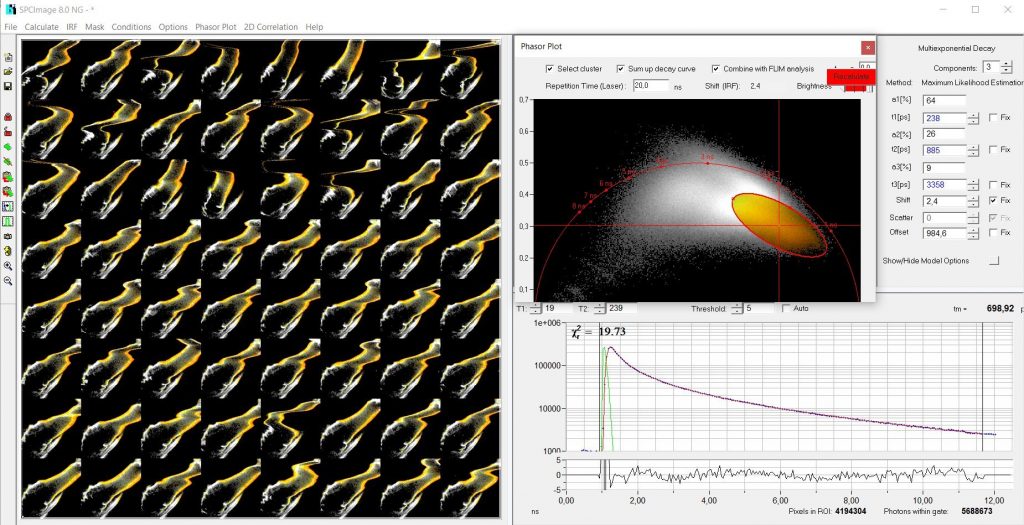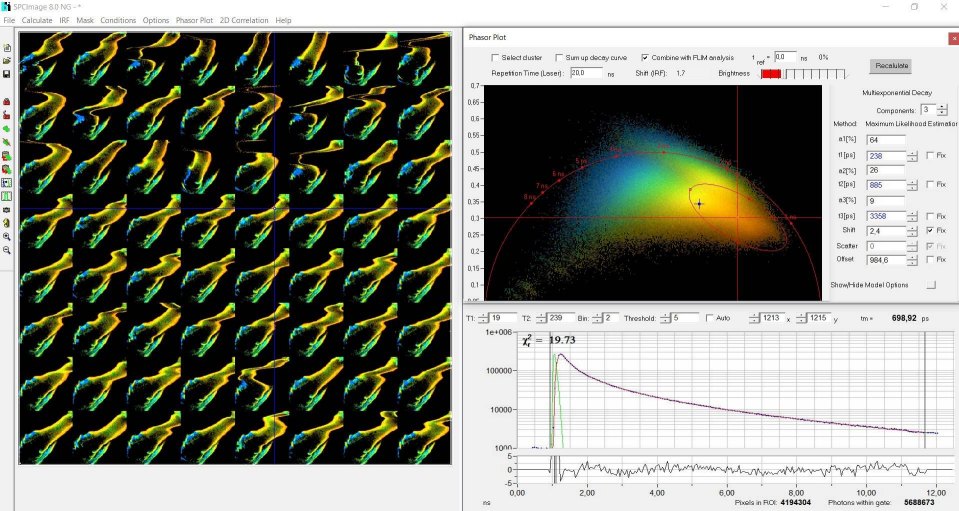The bh TCSPC FLIM systems are able to record fluorescence lifetime images of a moving object. The technique is based on temporal-mosaic recording and image segmentation by the phasor plot of bh SPCImage NG data analysis software, please see bh TCSPC Handbook, 8th ed. (2019). A cluster of phasors is selected in the phasor space, identifying pixels of a given decay signature in the FLIM mosaic. These pixels are back-annotated in the mosaic, selecting details of the object irrespectively of their location in the individual images. The decay data of the pixels within the selected areas are summed up. The result is a single decay curve of the detail of interest with extremely high pixel number. This curve can be analysed at high precision. For details please see application note Precision Fluorescence-Lifetime Imaging of a Moving Object.
Figures: Autofluorescence mosaic data of a leg of a water flee. Frame time 0.5 seconds, 64 frames recorded in FLIM mosaic. Fig.1: Data loaded into SPCImage, phasor plot activated. Note the low photon number in decay curve of a single pixel. Fig 2: Features with yellow phasor signature selected by 'Select Cluster' function of phasor plot, decay curves of selected pixels summed up by 'Sum up decay curve' function. Resulting decay curve shown lower right. The resulting curve is analysed at high precision, decay parameters shown upper right.



